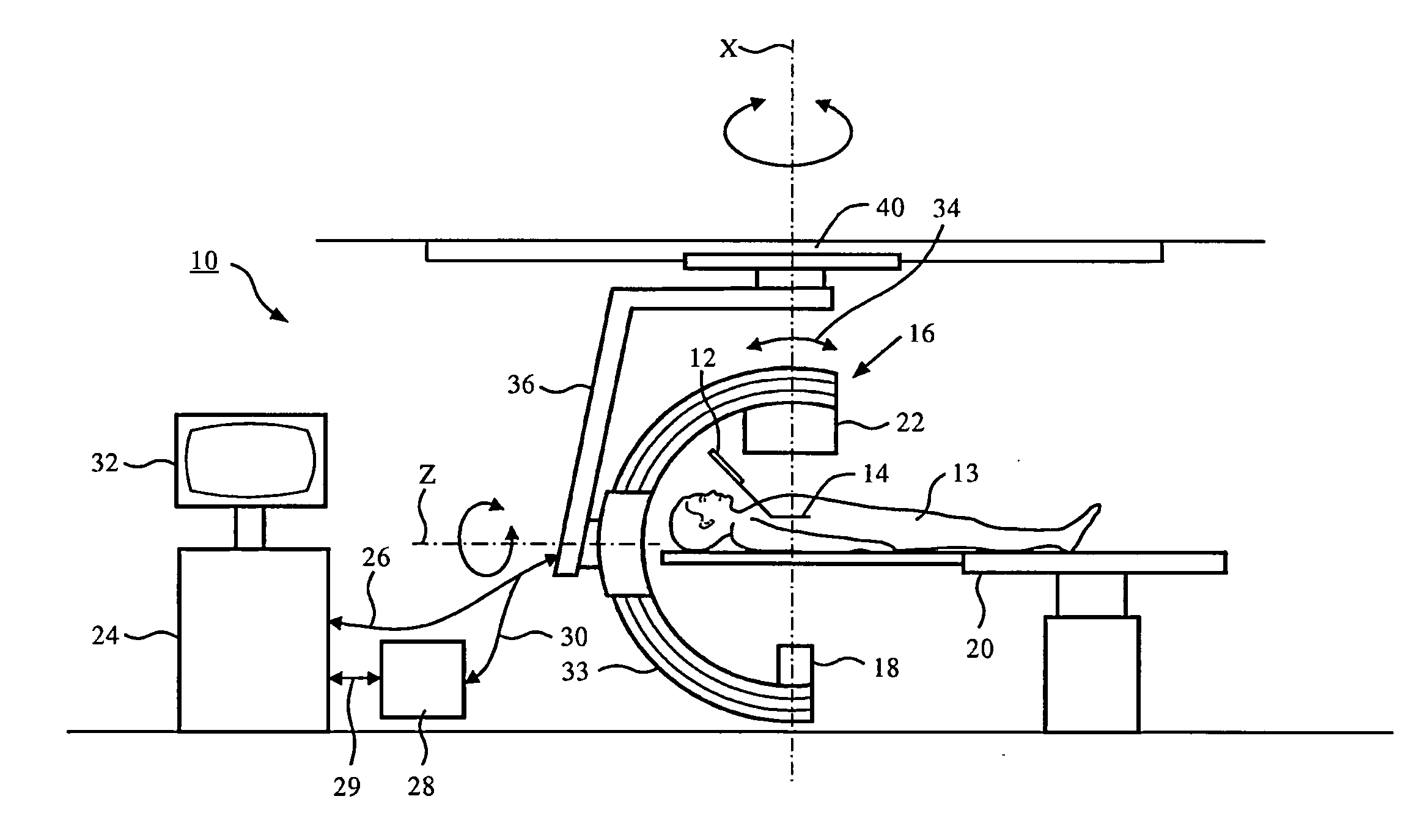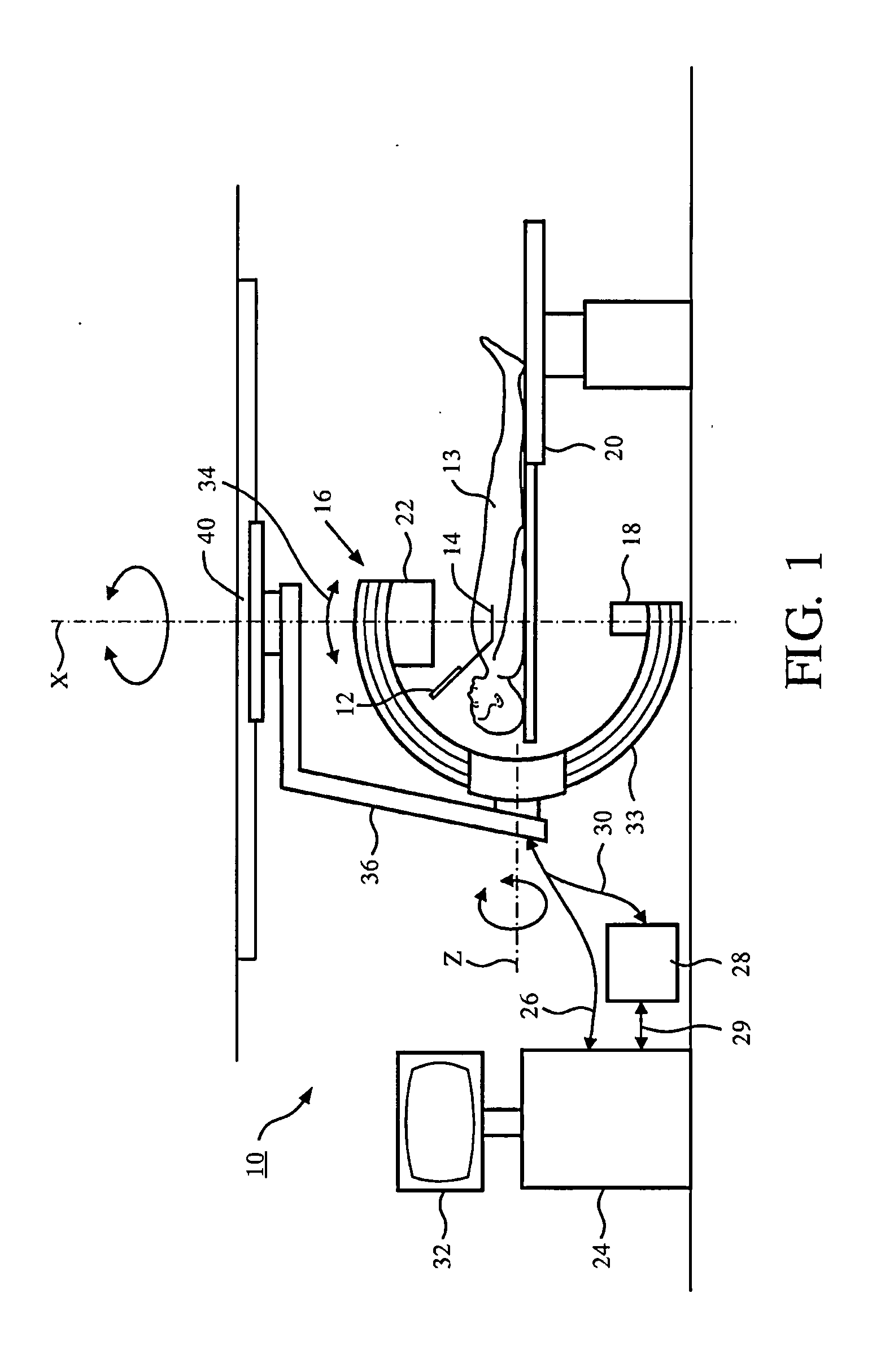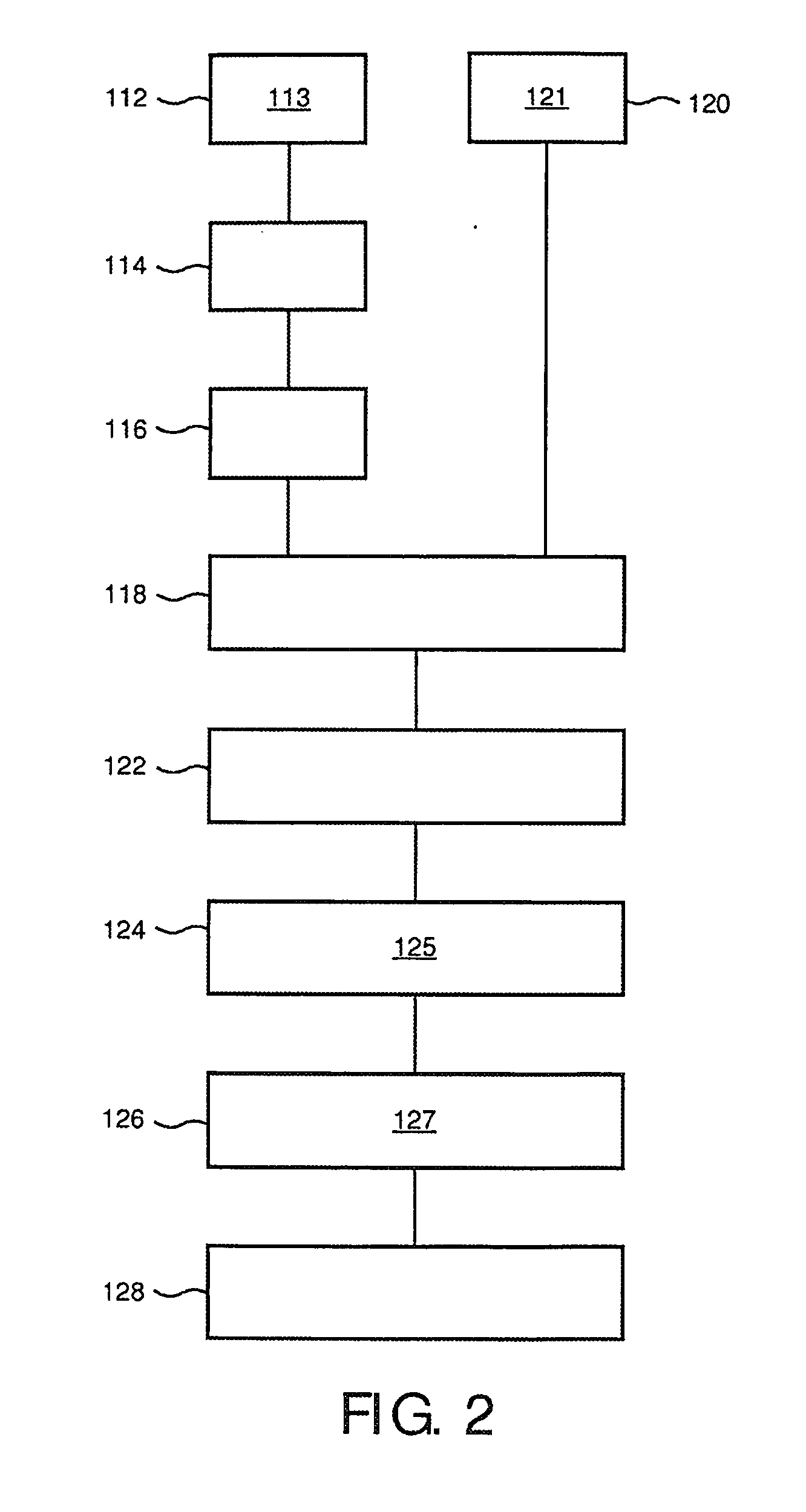Navigating an interventional device
a technology of interventional devices and navigation devices, which is applied in the field of navigation interventional devices, can solve problems such as cluttering of interventional images, and achieve the effects of convenient interventional procedures, improved detection, and easy readable image information
- Summary
- Abstract
- Description
- Claims
- Application Information
AI Technical Summary
Benefits of technology
Problems solved by technology
Method used
Image
Examples
Embodiment Construction
[0105]FIG. 1 schematically shows a system 10 for navigating an interventional device 12 within a tubular structure of an object, for example a patient 13. As an example, the interventional device is a guide-wire for percutaneous coronary interventions. The guide wire has a tip, indicated with reference number 14, but not further shown. The system 10 comprises an X-ray image acquisition device 16 with a source of X-ray radiation 18 provided to generate X-ray radiation. A table 20 is provided to receive a subject to be examined, for example the patient 13. Further, the X-ray image acquisition device 16 comprises a detection module 22 located opposite the source of X-ray radiation 18, i.e. during the radiation procedure, the subject or patient 13 is located between the source of X-ray radiation 18 and the detection module 22. The latter is sending data to a control unit or processing unit 24 connected to the X-ray image acquisition device 16 by a cable connection 26. Of course, the cab...
PUM
 Login to View More
Login to View More Abstract
Description
Claims
Application Information
 Login to View More
Login to View More - R&D
- Intellectual Property
- Life Sciences
- Materials
- Tech Scout
- Unparalleled Data Quality
- Higher Quality Content
- 60% Fewer Hallucinations
Browse by: Latest US Patents, China's latest patents, Technical Efficacy Thesaurus, Application Domain, Technology Topic, Popular Technical Reports.
© 2025 PatSnap. All rights reserved.Legal|Privacy policy|Modern Slavery Act Transparency Statement|Sitemap|About US| Contact US: help@patsnap.com



